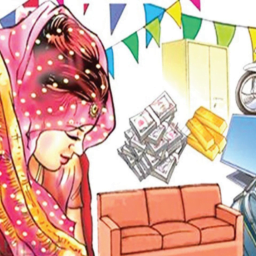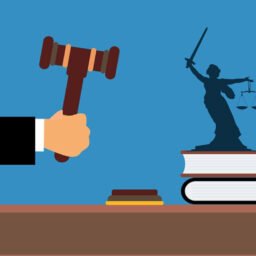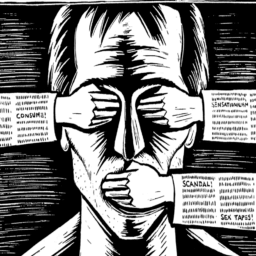INTRODUCTION
Two mediums of communications are supposed to be very powerful and have been able to crack a massive population of the country cope both urban and rural areas. Radio and Television Network plays a crucial role in the life of people, to make people aware of day-to-day events besides education and entertainment. Development and progress of the society in the era of great transformation are seen in people, as the people have become more familiar with most of the programmes broadcast either on TV or radio. In 1930, the British government brought the Radio services to India and was named “Indian State Broadcasting Service”, which later changed into “All India Radio” in 1935. A significant development in electronic broadcasting occurred in 1927 when radio services originated in India by the Indian Broadcasting company. The first organized broadcasting was inaugurated in India and the Radio Stations in Bombay and Calcutta in 1972.
In 1932, the British Broadcasting Corporation (BBC) started its broadcasting services as an Empire Service. All India Radio officially got to be known in 1957 as Akashvani. Television uses sophisticated and advanced technologies to prepare various programmes, significantly impacting viewers’ minds. Electronic broadcasting is said to be a medium to change the mindset of the people and a climate of modernization created with the introduction of innovative programmes. The importance and contribution of the Electronic press in creating awareness among the people have contributed significantly to the smooth functioning of the democratic process of Ming the world, which is said to be praiseworthy to an extent by people.
FREEDOM OF EXPRESSIONS VIS-A-VIS RIGHT TO TELECAST
ROMESH THAPPER v. UNION OF INDIA[1]
The case was about telecasting of film ‘Tamas’ on Television; the petition filed to prevent the screening of the movie on the fact that the film has violated under Article 21 and 25 of constitutional law and section 5 -B of the cinematograph Act,1952. In case, Supreme Court mentioned that “after hearing the judgement should be from the standards of being logical, determined, fearless and stablemen, not those of the men who are weak and have vacillating minds, nor of those men who scent danger in every hateful point of view in the said words “.
DIRECTOR-GENERAL, DIRECTORATE GENERAL OF DOORDARSHAN v. ANAND PATWARDHAN[2]
Doordarshan had refused to broadcast a true-life-based film titled “Father, Son and Holy War” because the film accommodated the scenes that could promote violence and obscenity. Whereas the filmmaker challenged the decision in Bombay High court by saying it was a violation of his fundamental rights following Article 19(1)(a) of constitutional law. The High Court disposed of the matter. Therefore the issue came before the Supreme Court held “the film did not violate any constitutional provision nor it proceeded to deprave and corrupt any average Indian citizen.” Thus from the judicial decisions, the individuals have the right to broadcast through the electronic media very well appeared under the freedom of expression and protected by Article 19(1)(a). The notion of freedom of speech and expression coping with the time has adapted itself to the changing needs of the society with strong support and recognition by the judiciary.
THE PRASAR BHARATI ACT, 1990
Prasar Bharati (Broadcasting Corporation of India) Act, 1990 received the assent to in years past 1990 on 12th September. It came into operation after seven years of the enactment (15thof September in 1997). It legislated for the formation of the broadcasting corporation. The intention for the association of the act was that the corporation should function as a genuinely autonomous body that shows innovation, dynamic and flexibility — with a high degree of credibility among the society. Hereafter was introduced in the Parliament that was subsequently passed by both the Houses. The show contains 35 sections which divide into four chapters. The present chairperson of Prasar Bharati is Shashi Shekhar Vempati.
UNION OF INDIA v. CRICKET ASSOCIATION OF BENGAL[3]
In this case, the Supreme Court gave the verdict that the broadcasting of the programmes should be under the control of the public and should get operated by the public statutory corporation. It implicated under the constitutional law of Article 19(1)(a) where it has been too that about the corporations, whose composition and constitution must be in such an order to ensure that their impartiality in political, social & economic matters and also other public issues in the society. Citizens have benefits of the plurality of views and must have opinions on all public issues. Private broadcasting networks see increased danger for the right of the citizens to free speech rather than the media controlled by the government.
THE CABLE TELEVISION NETWORKS (REGULATION) ACT, 1995
In the 1990 album, the word cable entered India incredibly after the War of the Gulf. With the availability of motion of foreign TV because of the networks through satellites, Indians could notice a proliferation of cable television programmes in country India. The rural areas got access to such television programmes. The fact is that most television programmes influenced by western culture which became a burden for the society in ancient duration. Therefore to check the tendency and regulate the functioning of cable television networks in the different states of India, the Cable Television Networks (Regulation) Ordinance was the regulation which was promoted by the President of the country India in the year 1994 on 29th September. A bill was introduced by Parliament, after both the houses passed out the bill, the ordinance converted into the act called “The Cable Television Networks (Regulation) Act, 1995”.
It affirmed to regulate the functioning of the cable television of the networks in the country and for which the matters connected are inseparable and incidental to it. Therefore, the act is explained briefly in five chapters spread over 23 sections. In 2003, the team advised through the amendment of 2003 with the law. Amendment of the act with the target to deliver to the regular and self-assertive increment in their link charges. A stipulation got enacted with the thought that the rule would balance the issues regarding the TV and the networks, and legislation would become the medium in resolving the problems of the network circulation.
CONCLUSION
The networks like Television and Radio as electronic media has a critical tendency between them. Television is said to be one of the most used electronic media because the franchisee pays for an advertisement to show people, to bring more business for the franchise where through Radio people only listen, not able to give the audience visuals. Electronic media has also been saying the basis of e-commerce marketing as in the present scenario, a network called Internet acknowledged as one of the most profitable electronic media. The reputation of innocent people is getting hypocritical due to electronic media in the case of misinformation. Electronic media has its advantages which helps the people who also have disadvantages that can mislead or destroy the soul. Similarly, if there are no electronic media in the world, people in a society would be isolated from the world, not only the governments, law-making news, but also from neighbouring towns and cities. Despite demerit, electronic media plays a vital role in communication in societies.
Author(s) Name: Aarushi Upadhyay (IAMR LAW COLLEGE, CCS University)
References:
[1] [1988] 2 SCC 688.
[2] [2006] 8 SCC 433.
[3] [1995] SCC (2) 161.
















